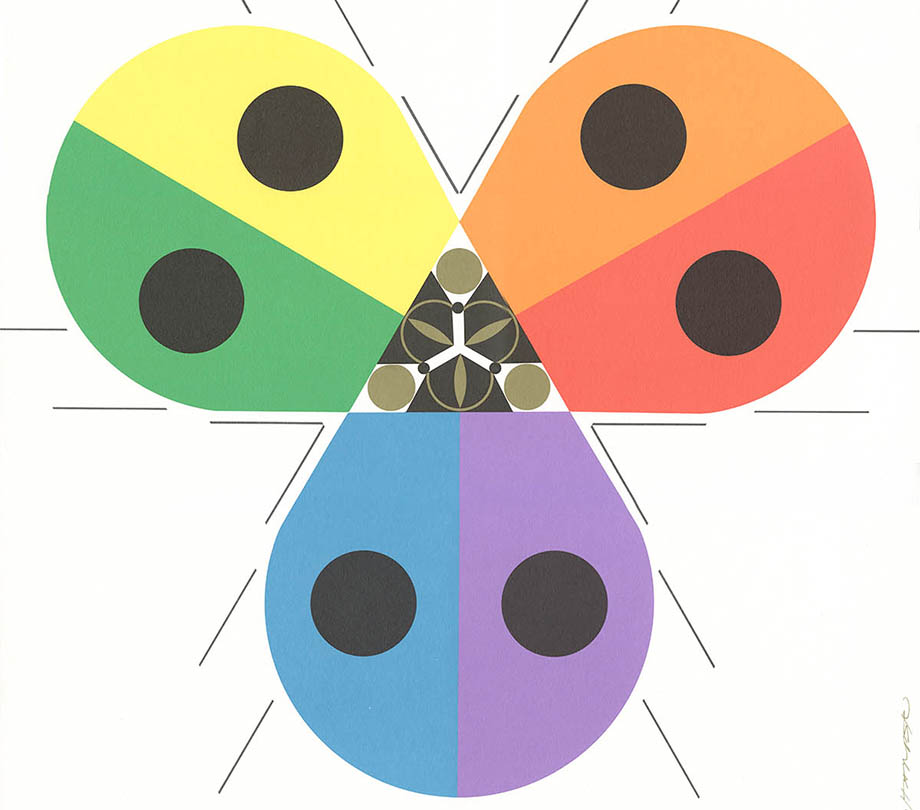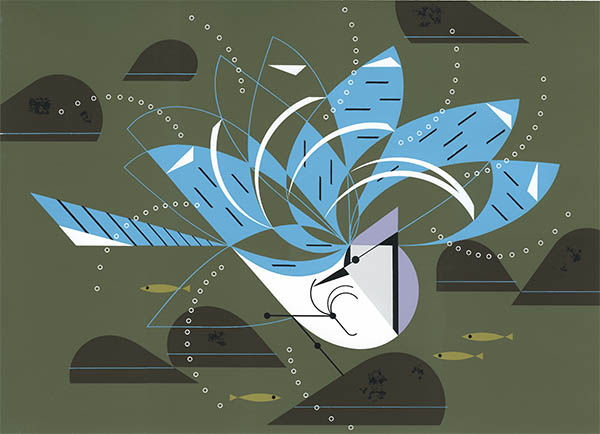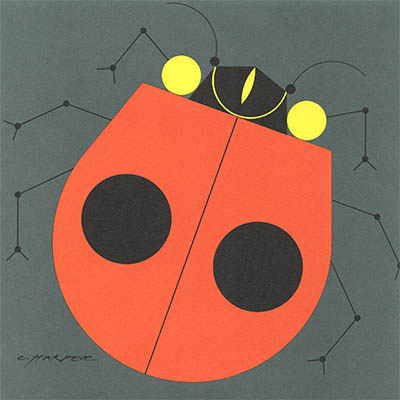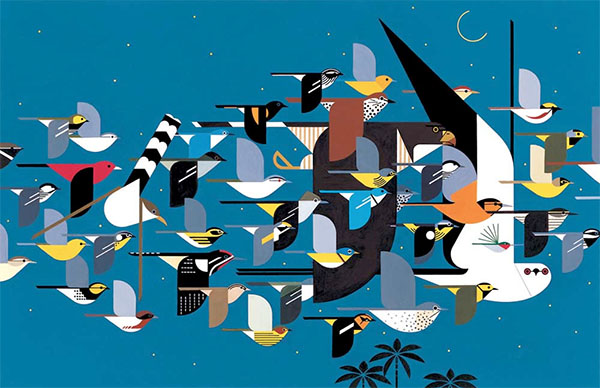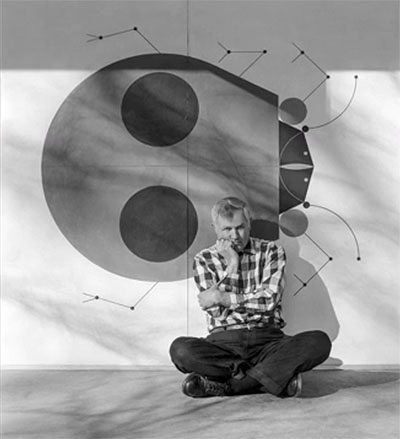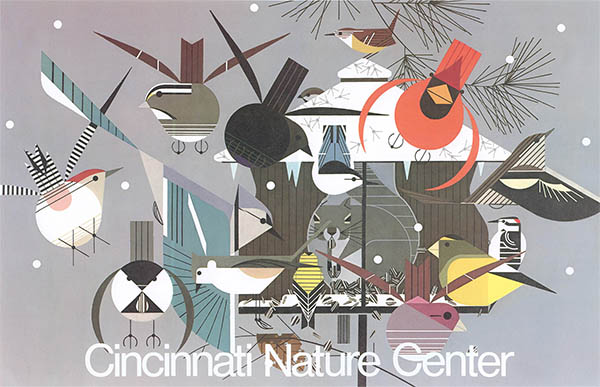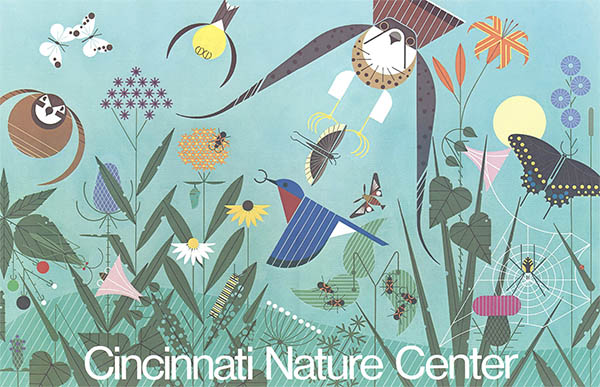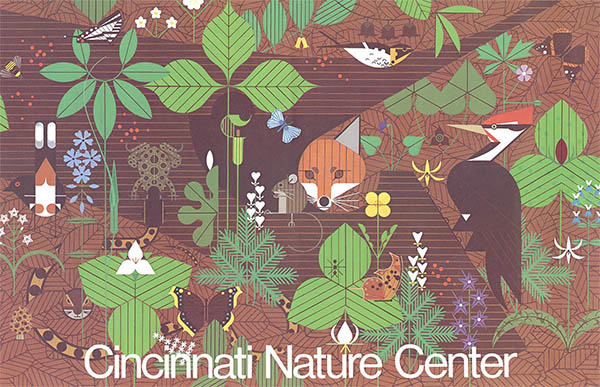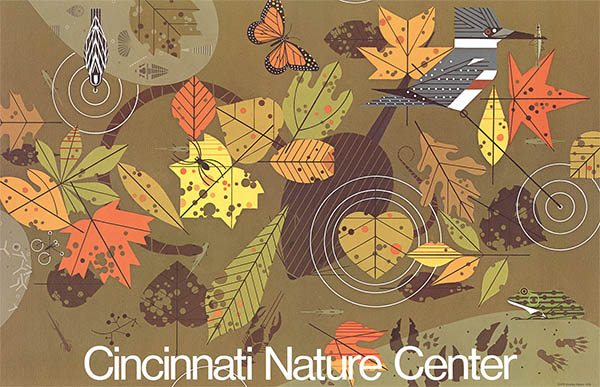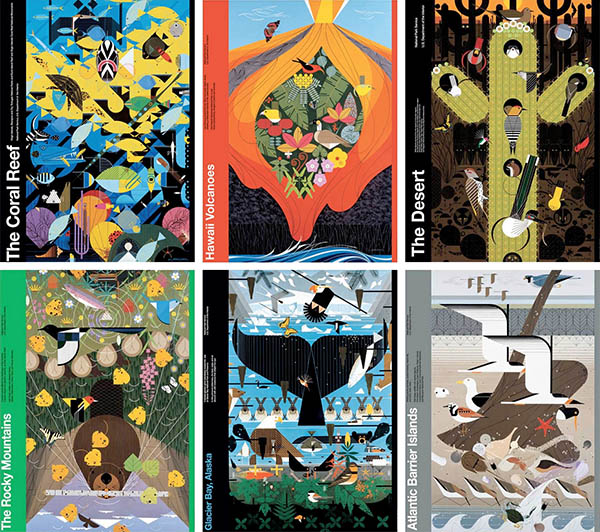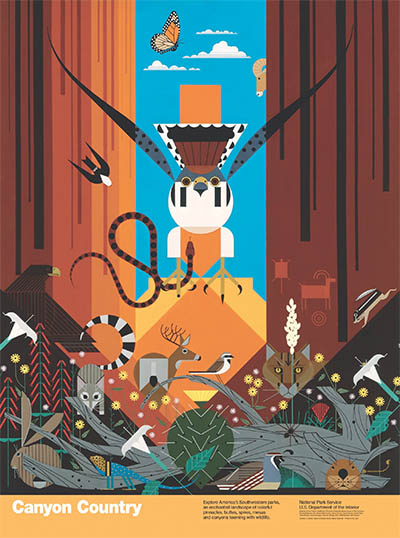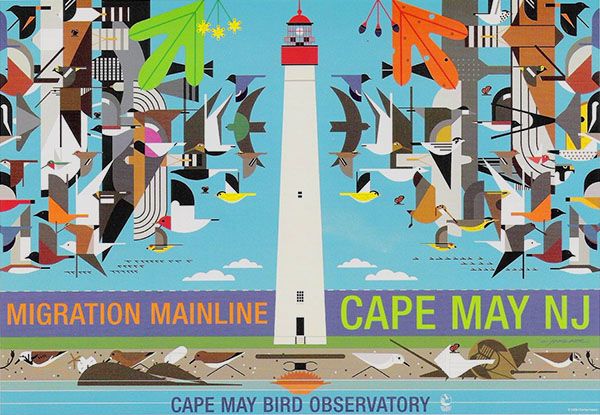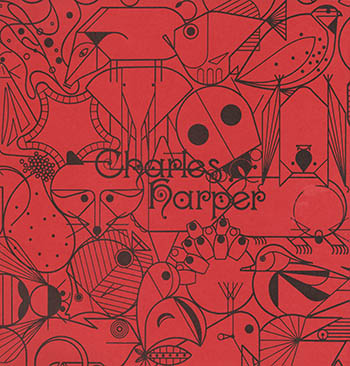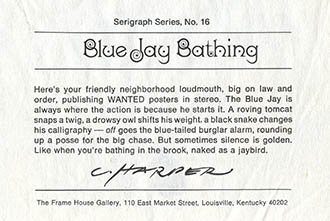In 1968 Charley approached Wood Hannah, Sr. of the Frame House Gallery in Louisville, Kentucky to market limited-edition serigraphs of his work.1 As he stated in a letter to Hannah:
“Some of the most traumatic experiences of my life have resulted from the difficulties and frustrations encountered in silk-screen printing. But it is the ideal process for prints of my work. And I feel that, of all printing processes, it provides the most intimate contact between artist and viewer... In fact, I find my prints are usually more satisfying than the originals.” 2
Working with Hannah would turn out to be much different than working in his basement with Edie in the 1950s. For his Frame House serigraphs Charley made stencils from film positives, set the registration, checked the color and monitored the press (Silk Screen Products of Cincinnati) until “I’m sure the run is exactly the way I want it to be.” 3 But Charley was such a perfectionist that his designs required as many as 14 press runs, often overprinting the same color multiple times. It taxed even the abilities of an experianced commercial printer:
“I go back to my studio to paint. Usually a phone call is waiting from the printer: ‘Come back, something's gone wrong.’ The printers try cheerfully when I demand the impossible of the silkscreen process and their equipment and smile indulgently when I reach the limit of my patience, kick the drying racks, howl when my foot hurts, and vow to give up silkscreening forever.” 4
In addition to his frustrations with silkscreening, Charley also had some difficulties with the entire business of art publishing. As he said in 1981:
“Frame House is the only gallery I’ve ever dealt with that is run like a business. with business people in charge and lots of promotion and PR. I had a difficult time adjusting to that at first but it really turned out well in the long run.” 3
It turned out pretty well indeed. In all he produced more than 100 serigraphs for Frame House.
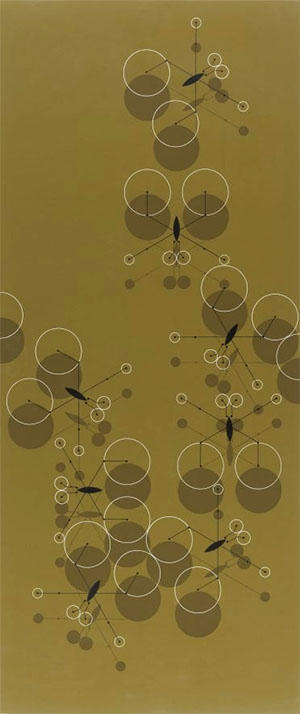
Jesus Bugs, 1968. Charley’s favorite painting5
Charley once said that he couldn’t draw a straight line without a ruler or a circle without a compass and over the years his work relied more heavily on both. His loose and lyrical style of the 1950s had transformd into an increasingly refined, geometrically rigorous, almost clinically precise graphic style by the end of the 1960s – the final evolution of “minimal realism.”
Unzipped, 1970
Antypasto, 1970
Blue Jay Bathing, 1971 6
Detail, Homebody, 1972
Ladybug, 1974
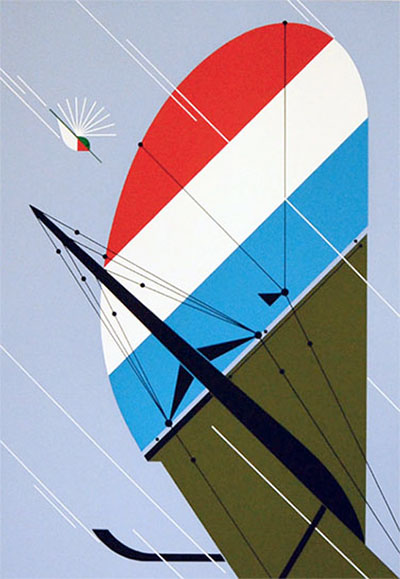
Fearless Feathers, 1987
Mystery of the Missing Migrants, 1990
By the 1970s Charley considered himself foremost a wildlife artist and became a committed conservationist and environmentalist long before it was fashionable. As he wrote in 1974:
“the more I become involved with it, the more I am troubled by unanswerable questions about our exploitation of plants and animals and our casual assumption that the natural world is here only to serve people. I have to ask myself how man, the predator with a conscience, can live without carrying a burden of guilt for his existence at the expense of other creatures” 4
Eventually Charley was only accepting commissions from organizations that shared his ecological views. He did posters for organizations such as the Audobon Society, the Cape May Bird Observatory, the Cincinnati Nature Center, the Hamilton County Park District, the US National Park Service and the Cincinnati, Louisville and San Diego Zoos.
Charley at home, early 1970s
Charley as a naturalist, 1974
His posters represent some of the most compositionally complex work of his long career. Here, as an early example, is his wonderful four seasons series for the Cincinnati Nature Center:
Cincinnati Nature Center, 1979
Perhaps the high point of his poster work was a series of ten commissions for the National Park Service in the late 1980s–early 1990s:
Charley gave up his teaching position at the Art Academy in 1979. He illustrated has last Ford Times cover in 1982 and as the years rolled by he and Edie began to slowly scale back their studio. But then there was, as Michael Beruit wrote, a “curious coda” at the end of his career.7 In 2003 Todd Oldham, the MTV House of Style designer and life-long admirer, struck up an unlikely friendship with Charley, who was 43 years his senior. Oldham spent five years carefully archiving Charley’s vast output and published the gargantuan Charlie Harper, An Illustrated Life. After 60 years of work, where he was known only in Southwest Ohio and among conservation and birding circles, Charley became an overnight star. This new found attention left the West Virginia farm boy both bewildered and bemused.
Charley died of pneumonia on 10 Jun 2007, only days after he reviewed Oldham’s galleys for the book. Edie died of Alzheimers complications on 23 Jan 2010. Brett, their only son, continues to manage the studio and estate.
Charley’s last commission, 2006
There’s plenty more about Charley and Edie – their life, art and legacy – that could be said, but for now we’ll leave things here.
Frame House folder
1. In 1962 the Kentucky wildlife artist Ray Harm and the Louisville businessman/art collector Wood Hannah, Sr. founded Ray Harm Wildlife Associates with the intention of selling limited-edition prints of Ray’s work – a revolutionary idea in art marketing. The name was soon changed to Frame House Gallery Publishing Inc. and they expanded their roster of artists to include not only Harm and the Harpers but other (mostly wildlife) artists including Guy Coheleach, Charles Frace, Jim Harrison and the Harper protoge Ikki Matsumoto.
Hannah’s business-like approach revolutionized how art was marketed. No longer was it a case of selling paintings or prints one at a time out of the trunk of their car, but rather 500 or 1500 prints at a time. Although this model brought the works of Harm or Harper into the living room, it also brought us the work of Thomas Kinkade, Painter of Light® – so Cave quid optes.
After Frame house closed its doors ca.1991, Charley’s serigraphs were published by Somerset House Publishing and later by Mill Pond Press.
2. Quoted from Charley’s letter to Wood Hannah.
3. From Findsen, Owen. “A Different Kind of Bird.” Cincinnati Enquirer, 23 Aug 1981.
4. From Charley’s Frame House Gallery interview, 1974.
5. The original acrylic painting hung in his bedroom for years. It reminded him of watching water striders in the creek on his childhood farm in West Virginia.
6. Charley wrote a short essay to accompany each of his prints. These essays have been described as anything from “poetry” (John Ruthven) to “wince-inducing puns” (Michael Bierut). Here is the essay for Blue Jay Bathing:
7. Beruit, Michael. Flat, Simple and Funny: The World of Charley Harper. Design Observer.
Unless otherwise noted all images are copyright 2013 Estate of Charley Harper and are used here by permission.
11 Feb 2013, updated 1 Aug 2015 ‧ Illustration
A Charley Harper Retrospective:
I – Charley and Edie
II – The Birds
III – Tin Lizzie/Dinner for Two
IV – The Golden Book of Biology
V – Bambi and Childcraft
VI – The Animal Kingdom
VII – Frame House
